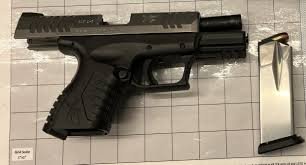The landscape of firearms has expanded far beyond national borders, creating a complex and dynamic market known as guns international. This article will delve into various aspects of the global firearms industry, exploring its implications, challenges, and the key players involved.
Table of Contents
Overview of the Global Firearms Market
The guns international market encompasses the buying, selling, and trading of firearms across different countries. With advancements in technology and communication, the international arms trade has grown significantly. This market includes not only military weapons but also civilian firearms, such as handguns and hunting rifles.
The global firearms industry is influenced by numerous factors, including political, economic, and social dynamics. Countries regulate their arms trade differently, creating a patchwork of laws that govern how firearms can be exported, imported, and owned.
The Evolution of Firearms Trade
Historically, firearms were primarily traded within national borders. However, the rise of guns international trade can be traced back to the late 20th century, when geopolitical changes and conflicts increased the demand for weapons. International agreements, such as the Arms Trade Treaty (ATT), were established to regulate this trade and promote responsible practices.
Today, the guns international market is characterized by a blend of legitimate trade and illicit activities. While many countries engage in legal arms exports, illegal trafficking poses significant challenges to global security.
Major Players in the Firearms Industry

The guns international market is dominated by several key players, including manufacturers, governments, and private entities. Major firearm manufacturers such as Smith & Wesson, Glock, and Heckler & Koch have established their presence worldwide, producing a range of weapons for military, law enforcement, and civilian use.
Additionally, countries like the United States, Russia, and China are significant exporters of firearms, influencing global trade dynamics. These nations often engage in military partnerships, supplying arms to allies and fostering relationships through defense contracts.
Legal Framework Governing International Arms Trade
The regulation of the guns international market is critical for ensuring safety and security. Various treaties and national laws govern how firearms are traded. The Arms Trade Treaty, ratified by over 100 countries, aims to prevent the diversion of arms to illicit markets and promote transparency in the international trade of weapons.
Countries also have their own regulations that dictate the export and import of firearms. For instance, the United States has stringent export controls, requiring licenses for arms sales to foreign entities. Understanding these legal frameworks is essential for anyone involved in the guns international market.
The Impact of Technology on Firearms Trade
Advancements in technology have significantly impacted the guns international market. Modern manufacturing techniques, such as 3D printing, have made it easier to produce firearms, raising concerns about unregulated production. The internet has also facilitated the illegal trade of firearms, as buyers can access weapons through online platforms.
Moreover, technology has enhanced the capabilities of firearms, leading to the development of more sophisticated weaponry. This evolution necessitates continuous monitoring and regulation to ensure that such advancements do not contribute to global insecurity.
Challenges Facing the International Arms Trade
The guns international market faces numerous challenges, including illegal trafficking, regulatory inconsistencies, and the ethical implications of arms sales. Illegal arms trade undermines efforts to maintain peace and security, contributing to violence and conflict in various regions.
Moreover, the varying regulations across countries create loopholes that can be exploited. Some nations may have lax controls, making it easier for arms dealers to operate without oversight. Addressing these challenges requires international cooperation and a commitment to enhancing regulatory frameworks.
The Role of International Organizations

International organizations play a crucial role in regulating the guns international market. The United Nations (UN) and other bodies work to promote disarmament and control the proliferation of arms. They facilitate discussions among member states to develop strategies aimed at reducing the illicit arms trade and promoting peace.
Efforts such as the UN’s Program of Action on Small Arms and Light Weapons aim to address the challenges posed by small arms proliferation, which often leads to increased violence and instability.
The Future of the Global Firearms Market
Looking ahead, the guns international market is likely to continue evolving in response to global events and technological advancements. The impact of emerging technologies, such as artificial intelligence and autonomous weaponry, will shape the future landscape of firearms trade.
Additionally, as nations grapple with issues of public safety and security, the demand for firearms may fluctuate. Countries will need to balance their defense needs with the responsibility of preventing weapons from falling into the wrong hands.
Also read 716 Area Code A Comprehensive Guide to Its History and Usage
Conclusion: Navigating the Complexities of Guns International
The guns international market is a multifaceted and ever-changing landscape. Understanding its dynamics is essential for policymakers, manufacturers, and consumers alike. As we move forward, it is vital to promote responsible practices, enhance regulatory frameworks, and foster international cooperation to ensure a safer and more secure world.
In conclusion, the complexities of the guns international market present both opportunities and challenges. By addressing the issues inherent in this industry, we can work toward a future where firearms are used responsibly and do not contribute to violence or conflict.


